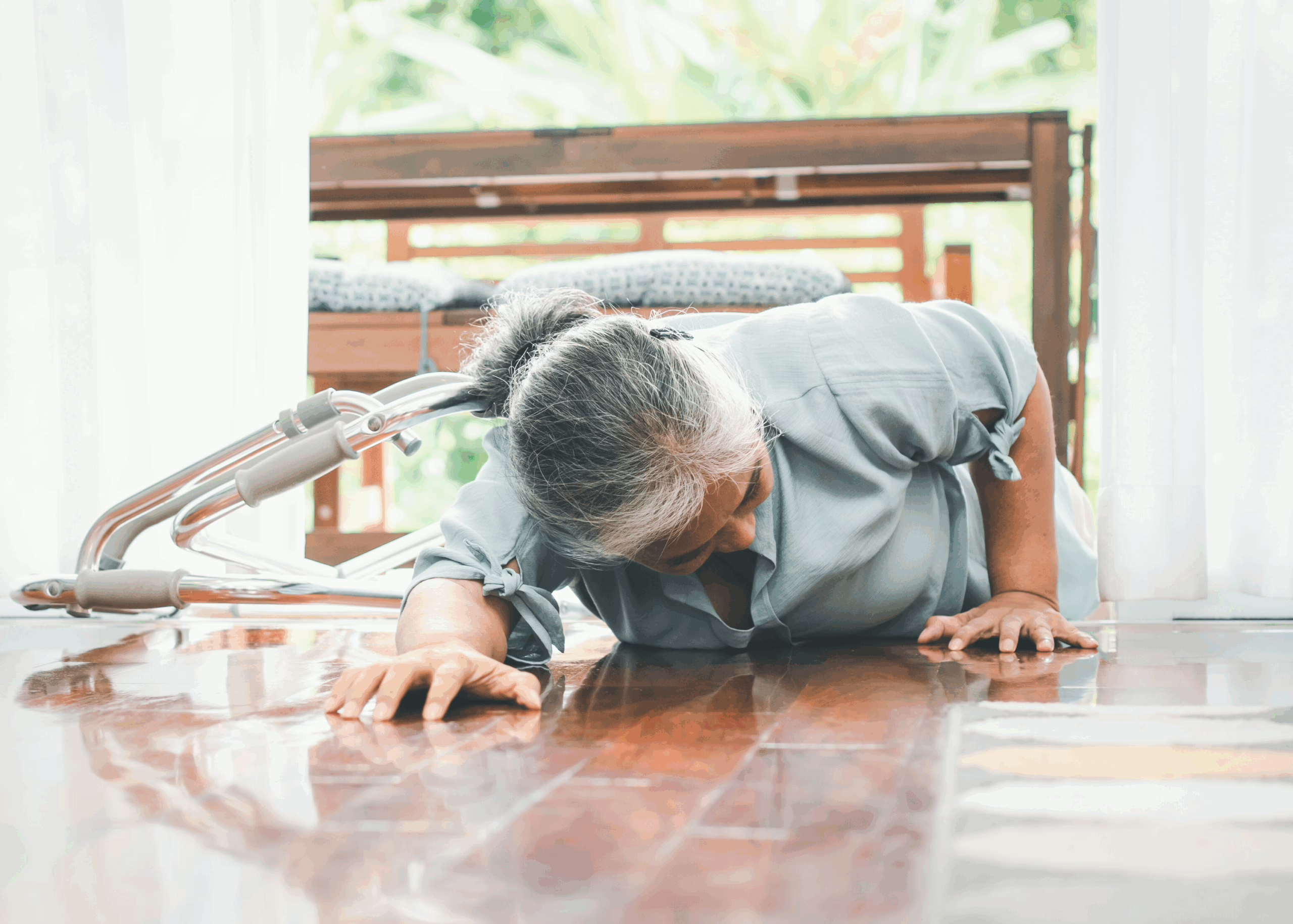Physical Therapy Decreases Fall Risk in Older Adults
The risk of falling as we age tends to increase, as do the consequences of falling. Conditions such as sarcopenia (loss of muscle strength and mass), neuropathy, arthritis, low blood pressure and cognitive decline can all increase our risk of falling, and if someone falls one time, the risk of falling again is much higher. In fact, the leading cause of injury for adults over 65 is falling, according to the CDC. However, we are not all doomed to the same fate, and there is a lot older adults can do to control our risk factors, decrease them, and improve our resilience if we do fall.
Three Ways Physical Therapy Can Help Prevent Falls
As discussed above there are many factors that can lead to falling, which means there are many things older adults can do to decrease their risk. Some of the biggest levers to pull are frequent exercise, balance training, flexibility, avoiding clutter on the floor, and making sure your vision and hearing are both evaluated and treated if necessary. The three that physical therapy can help with the most are exercise, balance and flexibility.
Exercise
One of the most important, if not the most important aspects of exercise as we age is Power which relates to how fast you can do a certain task. Some that are measured often when assessing risk of falling is how fast can you get up out of a chair 5 times, how fast can you walk and how far can you walk over a set period of time. In other words: How fast can you move? This can be the difference between catching your foot in a crack and falling, or getting it back in front of you to prevent a fall. When training for this, it is important to do it safely, and seeking help from a therapist or trainer can be very helpful.
Balance
The ability to stand on one leg, stand with one foot in front of the other, and maintain balance is paramount in decreasing risk of falls. Even tasks as simple as walking require a small period of time while standing on one foot, and the harder this becomes, the more difficult it is to maintain a normal gait, and walk without risk of falling. A common compensatory technique people often use without realizing it is shuffling the feet, which allows the person to have both feet on the ground at all times. This becomes a problem if they need to step onto, or over any object that they encounter, including stairs and curbs.
Flexibility
How much mobility you have in your joints, especially joints of the lower body is also paramount to reducing risk of falling. Arthritis is a condition of the joint that often limits the joint mobility and can cause pain. Physical therapy, stretching, and staying active can all help to maintain or improve this mobility. Having good mobility will allow for a more smooth, fluid walking motion, which allows for better contact with the floor, thus allowing for better accommodation to various floor surfaces and walking speeds.
Bottom Line
Exercise and activity is good for people of all ages but it becomes increasingly important as we age in order to offset some of the age related changes that occur. One simple at home test you can try at home to see if you are at an increased risk for falls is the 5x sit to stand test. This test is performed by sitting in a chair, and going from sitting to standing as fast as you can five times. The normative ranges can be found here. If you are not sure how to start, what to do or who to talk to, physical therapy is a great starting point to get you moving in the right direction.
References:
https://www.cdc.gov/falls/prevention/index.html







